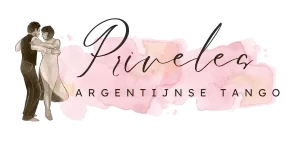What is the difference between tango and milonga?
There are a few key differences between a tango and a milonga genre. For one, a tango is generally slower than a milonga. Additionally, tango steps tend to be more complicated than milonga steps, and the music for tango is often more dramatic. Finally, in a tango, dancers usually stay close together, while in a milonga, they often move around the dance floor more freely.
- Music: Tango music is typically slower and more melodic than milonga music, which is upbeat and often has a repetitive rhythm.
- Steps: Tango steps are usually larger and more sweeping than milonga steps, which are smaller and more staccato.
- Posture: In tango, dancers often adopt a more formal posture, with their chests held up and their heads held high. Milonga dancers, on the other hand, tend to have a more relaxed posture, with their chests lowered and their heads tilted to the side.
- Floorcraft: Tango dancers need to be aware of other couples on the dance floor so that they can avoid collisions. Milonga dancers, on the other hand, can be more careless since the fast pace of the dance makes it less likely for couples to run into each other.
- Atmosphere: Tango dances are often seen as being more serious and romantic than milonga dances, which are generally seen as being more fun and festive.
What is the origen of milonga… time to party!
The Milonga is a popular Argentinian dance that originated in the city of Buenos Aires (the Rio de la Plata region of Argentina) and Uruguay. It is a lively, sensual dance that is danced close to your partner. It is a lively and sensual dance that is often danced to tango music. The Milonga has its origins in the African and Spanish cultures that mix in Argentina.
The word “milonga” itself comes from the African word “milongue”, which means “party”. The Milonga was originally danced by working-class Argentinians in the late 1800s. Over time, it became more popular and was embraced by all social classes. Today, the Milonga is enjoyed by people of all ages and backgrounds. It is a beautiful and passionate dance that captures the essence of Argentine culture.
How is the milonga dance rhythm?
Milonga rhythm is a fast, syncopated Argentine tango rhythm. It is danced to music with a 2/4 or 4/4 time signature and often has a dramatic, intense feel. It is thought to be a combination of the African-based candombe and the European-based milonga, which was itself a descendant of the Spanish fandango. The dance was originally danced in small, intimate venues such as cafes and private homes.
Today, it is often danced at larger events such as tango festivals and milongas (tango social dances). The rhythm adds excitement and energy to the Argentine tango. When dancing the milonga, dancers often use quick footwork and intricate moves. Milonga is a great way to add variety when you dance the tango.
Famous milonga composers and music
Some of the most famous composers include Francisco Canaro, Edgardo Donato, and Rodolfo Biagi among many others. Their music is often characterized by a fast tempo and lively rhythm and is often used for dancing. Milonga is also sometimes played slower and can be used for either dancing or listening.
Some famous milonga songs
- Milonga sentimental Orquesta tipica Francisco Canaro (Singer:Ernesto Fama)
- El Torito Edgardo Donato
- Ella es asi Edgardo Donato y Sus Muchachos & Horacio Lagos
- Campo a fuera Orquesta tipica Rodolfo Biagi (Singer:Teofilo Ibanez)
- Milonga criolla Francisco Canaro y Su Orquesta Típica
Video: see also the demonstration Milonga
Miguel Zotto and Daiana Guspero beautiful milonga dance at Tango Magia in Amsterdam.
What is the difference between the term milonga dance and milonga social
The term milonga is used as well as for the dance (style) as an event. That can be a bit confusing. When people say ‘we go to a milonga!’ they mean they go to an event where people will dance both tango style and milonga style etc.
Finally, how can you learn to dance the milonga?
There are a few ways that you can learn to dance the milonga. You can take classes, watch videos, or find a partner to dance with. If you want to take classes, there are many options available. You can find group classes, private classes, or even online classes. Group classes are a great way to socialize and meet new people who share your interest in dancing. Private classes can be more expensive, but they offer a more personalized experience. Another option is to watch videos. There are many instructional videos available online. You can also find videos of people dancing the milonga, which can help see how the dance is supposed to look.
Learning to dance the milonga at Priveles tango
If you are eager to learn to dance the milonga also at Priveles Tango you can book milonga dance classes.
Are you interested in our tango lessons?
Contact us on our contact page and we’ll call you for more information.
